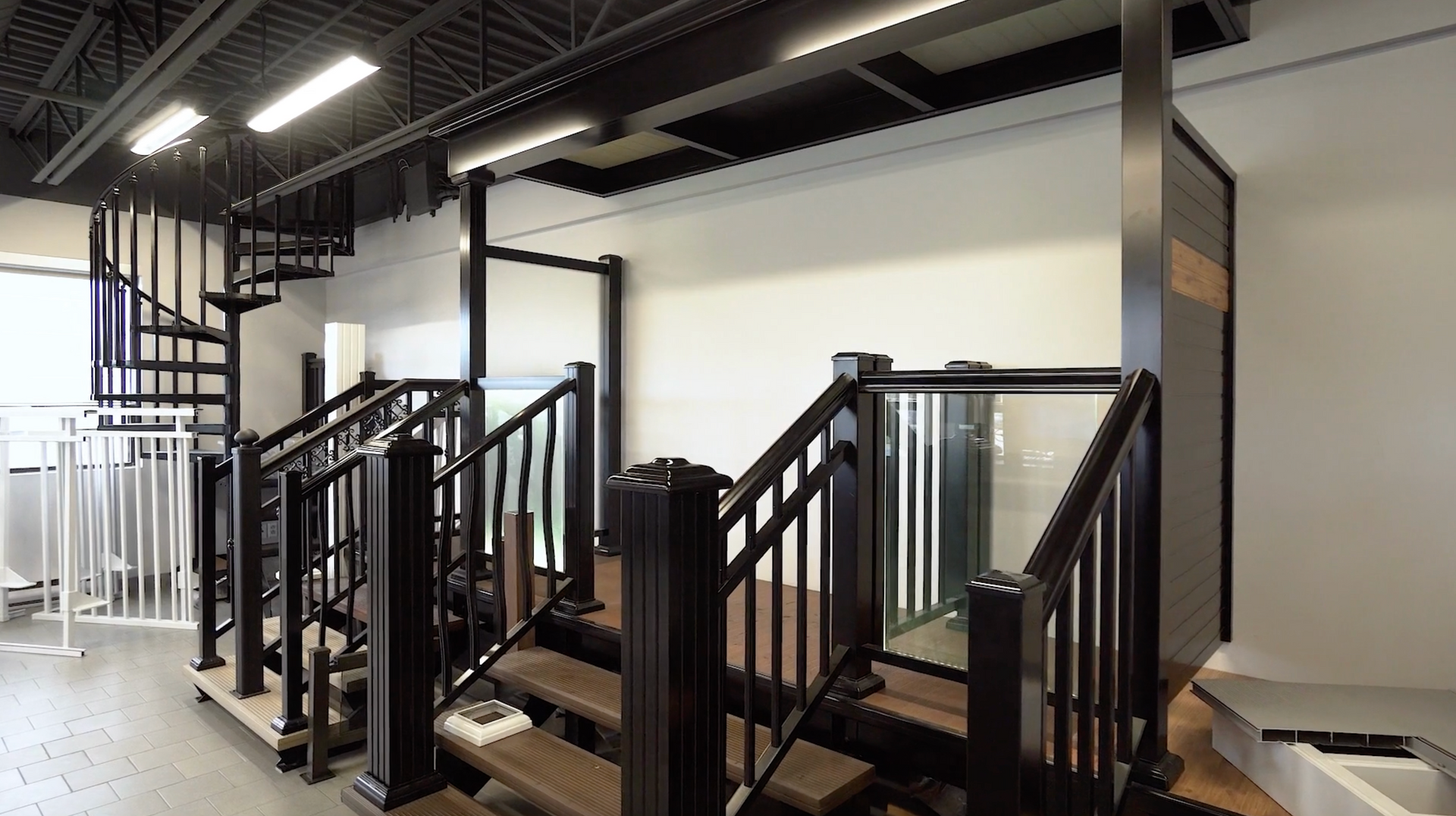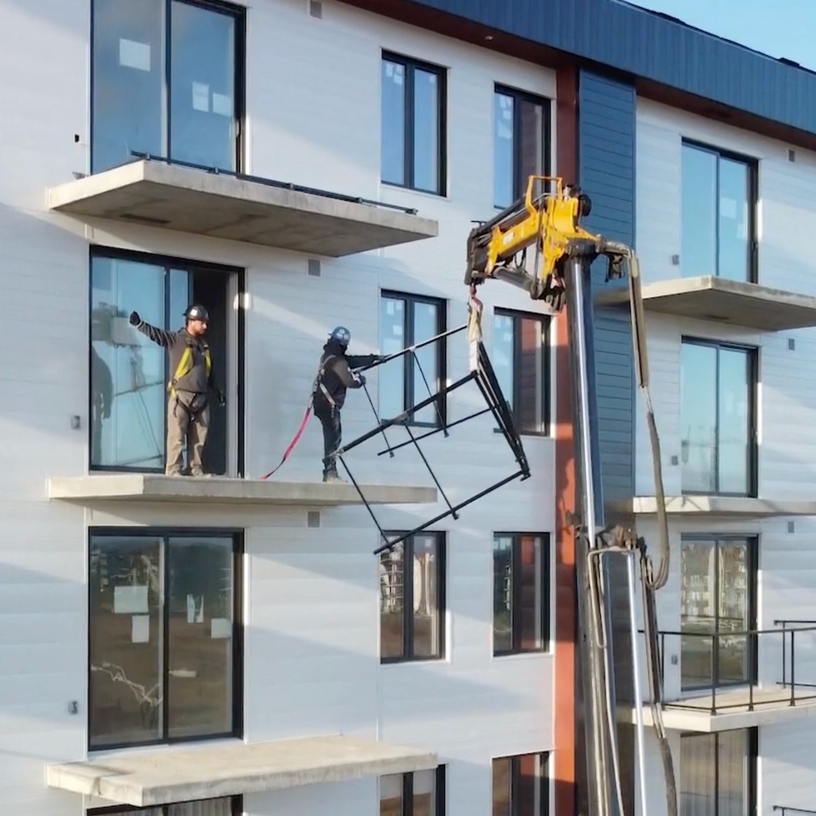BRAXX BLOG
Aluminum vs. Steel vs. Wood Railings: Making the Right Choice for Your Needs.

Choosing the best type of railings for your home can be challenging. You'll need to consider several factors, including aesthetics, durability, maintenance, and cost.
Aluminum, steel, and wood are three of the most popular materials used for railings, each offering distinct advantages but also having drawbacks you need to be aware of. Your decision will affect the project’s aesthetic appeal, cost-effectiveness, and overall quality.
So, let's explore each material's characteristics, advantages, and disadvantages to help you make an informed decision.
Aluminum Railings
Aluminum railings are a popular option due to their strength, affordability, and sustainability blend. Let’s explore the main advantages of aluminum that have made them such a great option.
Durability and Strength
Aluminum railings are renowned for their excellent durability and strength. While lightweight, aluminum is incredibly sturdy and can withstand significant pressure without bending or breaking. This makes it ideal for indoor and outdoor applications, including decks, balconies, and staircases.
Low Maintenance
One of the most appealing aspects of aluminum railings is their low maintenance requirements. Aluminum does not rust or corrode, even when exposed to harsh weather conditions. A simple periodic cleaning with soap and water is typically all needed to keep aluminum railings looking new for years.
Aesthetic Versatility
The classic metallic look is appealing for some projects but is not the only option. Aluminum railings come in various styles, colours, and finishes — allowing homeowners to choose a design that complements their home's architecture.
Powder coating can provide a sleek, modern look while adding extra protection against the elements. Projects that won’t benefit from the metallic sheen can still have the aesthetic appeal they’re after.
Cost-Effectiveness and Environmental Sustainability
While aluminum railings may cost more upfront than wood, they are generally more affordable than steel. The long-term maintenance and replacement cost savings make aluminum a cost-effective choice for many homeowners.
Additionally, aluminum is a highly recyclable material. Sometimes, it can be reused directly; if not, it can be recycled and reused with no degradation in the properties that make it so highly sought after.
Steel Railings
Another common option is steel railings, with strength being the most appealing attribute. We’ll explore the advantages that make steel the right choice for many projects.
Superior Strength
Steel railings are known for their superior strength and durability. This material can support heavy loads and provide a high level of security, making it a popular choice for commercial buildings and industrial settings. Steel railings are often favoured for their longevity for residential use, but the weight must also be accounted for.
Maintenance Requirements
Unlike aluminum, steel is prone to rust and corrosion, especially outdoors. To prevent this, steel railings require regular maintenance, including painting or coating, to protect them from moisture and other corrosive elements. Alternatively, stainless steel offers better rust resistance but costs more.
Design and Aesthetics
Steel railings offer a modern, industrial look that can enhance the aesthetic appeal of contemporary homes. These railings are available in various designs, from minimalist to ornate, and can be customized to suit specific preferences. However, the finish of steel railings may require more upkeep to maintain their appearance over time.
Cost Considerations
Steel railings tend to be more expensive than aluminum and wood, with upfront costs and considering maintenance costs and potential repairs. While they offer unmatched strength, the higher costs and upkeep can be a drawback for some homeowners.
Wood Railings
Wood is a common building material in various projects, and specific components and railings are no exception. While wood has its drawbacks, it also has unique advantages that can’t be found elsewhere.
Natural Beauty
Wood railings are prized for their natural beauty and timeless appeal. They can add warmth and character to any home, making them popular for traditional and rustic designs. The variety of wood types, grains, and finishes allows for high customization while still offering the typical wood aesthetic.
Maintenance and Durability
One of the main disadvantages of wood railings is their susceptibility to weathering and decay. Wood can warp, crack, or rot over time, especially when exposed to moisture. Wood railings require regular maintenance, including sealing, staining, or painting, to maintain their appearance and structural integrity.
Aesthetic Flexibility
Wood railings offer great aesthetic flexibility, allowing homeowners to achieve various styles, from classic to modern. They can be painted or stained in various colours to match the home's décor.
However, the need for ongoing maintenance can be a deterrent for some, so it’s crucial to consider these factors when making your decision.
Cost Implications
Wood railings are generally more affordable upfront compared to aluminum and steel. However, maintenance, repairs, and eventual replacement costs can increase over time, making wood a potentially more expensive option in the long run.
Which Option Is Right for You? Our Comparative Analysis
Now that we’ve broken down these materials' specific attributes, advantages, and drawbacks, which one is right for you? Let’s break down a few factors to consider as you decide.
Durability and Maintenance
Railings' durability and maintenance requirements are crucial factors to consider when choosing the right material. Each material offers something different:
- Aluminum: Highly durable, does not rust, minimal maintenance.
- Steel: Extremely strong, prone to rust, requires regular maintenance.
- Wood: Natural beauty, high maintenance, susceptible to decay.
Aesthetic Appeal
While durability and strength are objective factors, aesthetic appeal is subjective and will vary based on the project and preferences. A few elements to consider are:
- Aluminum: Modern, versatile, available in many styles and finishes.
- Steel: Industrial, robust, and customizable but requires upkeep for appearance.
- Wood: Classic, warm, and highly customizable, but needs regular maintenance.
Cost
Cost is an important element, but don’t only look at the upfront price. Each material balances upfront and ongoing costs differently:
- Aluminum: Moderate upfront cost, low long-term maintenance costs.
- Steel: High initial cost, ongoing maintenance costs.
- Wood: Low initial cost, high long-term maintenance and replacement costs.
Which Material is Right for You?
Choosing the right material for your home’s railings is a decision that involves balancing aesthetics, durability, maintenance, and cost. While steel and wood have unique advantages, aluminum is the superior choice for most homeowners.
The combination of strength, low maintenance, aesthetic versatility, and cost-effectiveness makes aluminum railings an excellent investment for enhancing your home's safety and beauty.
Ready to find high-quality aluminum railings for your next project? Braxx Railing offers customizable, durable, and cost-effective options for you to consider.
Check out our options or
contact us to learn more about what we can bring to your project.





